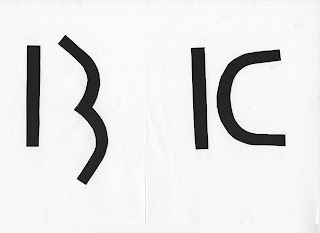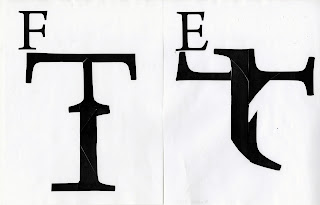creating new letters. show wat ppl did and wat i did and s's
Somehow, my "spacial interaction" idea turned into just interaction with letterforms. At first I handed out different letters to everyone asking them to make whatever letter they desired as long as they cut the given letter up five or less times.
I got back a lot of F's along with other letters.
T's, R's, and E's were also popular. From there, I wondered if each letter could be used to make another letter without repeat. Also, what if it was sans serif instead of serif? This time, I did this personally as to not bother other people.
I found that letters could either be really organic or really geometric. I wanted to know if there was a way to make a cohesive alphabet and what if I only used one letter to make 26 instead of 26 to make 26. The letter I chose to do was an s, simply because in the top experiment, I loved the form of it.
I found out that it was really really really hard because there were some letters that needed a straight line, like the stem of the B to be understood. I learned that letters have to have that distinct element to it. From there, I chose a letter that had straight and curved strokes: G.
G's were a bit easier but it was still tough, there wasn't an equal ratio of straight lines to curved lines. Therefore, I chose another letter: D. By the time I thought of doing D's, it was closing in on final crit day and I wanted to put my project in some type of context. I experimented with actually making a word with another word.
I did this on the computer and found that it was much easier to cut out letters and paste them instead of digitally manipulating it. It was faster but there wasn't much moving and shifting of elements. After doing that side track experiment, I went back to D's. This is still an ongoing experiment so I will cover it in the next post after final critique.



































